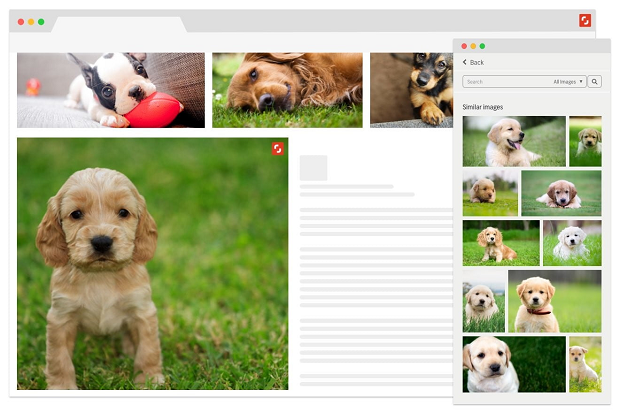If you’re a photographer, designer, or content creator, sharing your work online can be both exciting and nerve-wracking. You want to showcase your talent, but at the same time, you’re worried about protecting your rights. That’s where Shutterstock comes into play. As one of the biggest stock image platforms out there, Shutterstock not only helps you get your work in front of millions but also takes serious steps to safeguard your copyrighted creations. In this post, we’ll explore how
How Shutterstock Ensures The Security of Your Creative Content
Shutterstock employs a multi-layered approach to protect your copyrighted work. Here are some of the key ways they do this:
- Rigorous Contributor Verification: When you sign up as a contributor, Shutterstock verifies your identity and your ownership rights. This helps prevent unauthorized uploads and ensures that only legitimate creators can submit content.
- Copyright Policy and Legal Protections: Shutterstock has clear copyright policies that all contributors agree to. These policies specify that you own the rights to your work and that you grant Shutterstock a license to distribute it. They also have legal teams ready to act against infringement.
- Content Monitoring and Anti-Piracy Measures: Shutterstock actively monitors for unauthorized use of images. They use advanced technology like image recognition and digital fingerprinting to detect if your work is being used without permission elsewhere online.
- Watermarking and Licensing: When your images are available on Shutterstock, they are typically watermarked until purchased. This discourages unauthorized sharing. Once someone licenses your work, they receive a legally binding license that clearly states how they can use it.
- DMCA Takedown Process: If you find your work being used without permission outside of Shutterstock, you can file a Digital Millennium Copyright Act (DMCA) takedown notice directly with Shutterstock. The platform is committed to acting swiftly to remove infringing content.
- Secure Platform Infrastructure: Shutterstock invests heavily in cybersecurity to protect your account and content. This includes encrypted data transmission, secure storage, and regular security audits to prevent hacking or data breaches.
- Educational Resources: Shutterstock also provides resources and guidance for contributors on how to protect their work and understand copyright laws, empowering creators to take proactive steps.
All these measures work together to create a safe environment where your creative work is protected from theft, misuse, or unauthorized distribution. Shutterstock understands that your work is valuable, and they’re committed to ensuring your rights as a creator are respected and enforced. Whether you’re just starting out or a seasoned professional, knowing that your content is secure allows you to focus on what you do best—creating amazing visuals and designs.
Licensing and Usage Rights Provided by Shutterstock
When you upload your work to Shutterstock, one of the most important aspects to understand is how licensing and usage rights work. Essentially, Shutterstock acts as a bridge between content creators like you and the millions of users worldwide who want to license images, videos, or music for their projects. But what does that mean for you as a contributor?
Shutterstock offers different licensing options to buyers, primarily Standard and Enhanced licenses. As a contributor, your work is offered under these licenses, which define how the content can be used:
- Standard License: Allows for typical uses like websites, blogs, social media, presentations, and advertising campaigns. However, there are limits on the number of copies or impressions.
- Enhanced License: Provides broader rights, including unlimited reproductions, usage in merchandise for resale, or large-scale advertising campaigns.
Your rights as a contributor are tied to these licenses. When someone purchases a license for your work, they agree to abide by the specific terms, such as not redistributing or modifying the content beyond what’s permitted. As the creator, you retain your copyright, but you grant Shutterstock a license to distribute your work under these predefined terms.
What’s great about this system is that it offers clarity. You know exactly how your work can be used and the scope of licensing. Plus, Shutterstock handles the legal side, ensuring that the licensing terms are consistent and enforceable, so you can focus on creating more content without worrying about unauthorized uses.
It’s also worth noting that contributors have control over their work. You can set prices, choose to opt-out of certain licensing options, and review how your work is being used through your contributor account dashboard. This transparency helps you understand the value of your work and how it’s being utilized in the marketplace.
Measures Shutterstock Takes to Prevent Unauthorized Use
Protecting your copyrighted work doesn’t stop at licensing—it’s an ongoing process. Shutterstock employs a variety of measures to prevent unauthorized use and to uphold your rights as a contributor.
First, they have a robust content monitoring system. Using advanced algorithms and machine learning, Shutterstock scans their platform for potential copyright infringements. This system can detect duplicates, unauthorized copies, or derivative works that might violate the original licensing terms.
Second, Shutterstock has a dedicated legal team that actively investigates reports of infringement. If you notice someone using your work without permission outside of Shutterstock’s licensing framework, you can file a takedown notice. Shutterstock then reviews the claim and takes appropriate action, which might include removing the infringing content or pursuing legal remedies.
Additionally, they implement watermarking and metadata embedding techniques. When your work is uploaded, it often includes watermarks or embedded metadata that identify you as the creator. This makes it easier to track and prove ownership if unauthorized use occurs.
Shutterstock also collaborates with digital fingerprinting technologies to trace where and how images are being circulated outside their platform. This helps in identifying instances of unauthorized distribution or misuse on external websites or social media.
Most importantly, they promote a educational approach. Shutterstock provides contributors with resources and guidelines on how to protect their work, understand licensing terms, and respond to infringement issues. This empowers creators to take proactive steps in safeguarding their intellectual property.
All these combined measures form a comprehensive strategy to protect your work from unauthorized use, ensuring that your creative efforts are respected and that you retain control over how your work is distributed and used.
How Contributors Can Safeguard Their Work on Shutterstock
If you’re a contributor sharing your creative work on Shutterstock, protecting your copyright is a top priority. Luckily, there are several proactive steps you can take to ensure your images, videos, and designs stay safe and properly attributed. Let’s talk about some effective strategies to safeguard your work:
Register Your Work
While Shutterstock automatically grants copyright protection once you create an original work, registering your work with a copyright office provides additional legal benefits. It’s especially useful if you ever need to pursue legal action. Consider registering your most valuable or frequently uploaded images to reinforce your rights.
Use Watermarks During Your Promotion
Although watermarks aren’t used on Shutterstock’s platform itself, if you’re showcasing your work elsewhere—like your personal website or social media—adding a discreet watermark can deter unauthorized use. Just be sure not to ruin the visual appeal or make it overly intrusive.
Maintain Metadata and Documentation
Keep detailed records of your work’s creation process, including original files, timestamps, and any licensing agreements. Embedding metadata into your images (like your name, contact info, and copyright notice) can help establish ownership and make your work easier to identify if infringements occur.
Set Clear Licensing Terms
Shutterstock provides licensing options, but if you’re sharing work elsewhere, be explicit about how your work can and cannot be used. Clear licensing terms reduce misunderstandings and help protect your rights.
Stay Informed and Engage with Shutterstock’s Policies
Familiarize yourself with Shutterstock’s Contributor Terms and Community Guidelines. Staying informed ensures you understand your rights and responsibilities, and helps you spot potential issues early. Additionally, participating in the contributor community can provide tips and support from fellow creators.
Leverage Shutterstock’s Tools and Resources
Shutterstock offers various tools to track your work’s usage and monitor for unauthorized uses. Use these features regularly to stay aware of where your content appears online. Also, consider watermarking your images when sharing outside the platform to add an extra layer of protection.
Remember, protecting your creative work is an ongoing process. Combining these proactive steps with Shutterstock’s protections creates a strong defense against unauthorized use and helps ensure you retain control over your valuable creations.
Reporting and Resolving Copyright Infringements with Shutterstock
Even with precautions in place, copyright infringements can happen. The good news is that Shutterstock has a straightforward process to help you report and resolve these issues efficiently. Here’s what you need to know to protect your work through their system:
How to Report a Copyright Infringement
- Identify the infringement: Find the unauthorized use of your work on Shutterstock or elsewhere online.
- Gather evidence: Take screenshots, note URLs, and compile any relevant information that proves your ownership and the infringement.
- Use Shutterstock’s Copyright Complaint Form: Visit Shutterstock’s copyright infringement page or the ‘Report a Violation’ link within your contributor dashboard to submit a formal complaint.
What to Include in Your Report
When submitting a complaint, be clear and detailed. Include:
| Information Needed | Description |
|---|---|
| Your Contact Information | Name, email, and other contact details so Shutterstock can reach you if needed. |
| Work Details | Specific images or videos involved, including URLs or identifiers. |
| Proof of Ownership | Evidence demonstrating you are the rightful creator (e.g., original files, registration info). |
| Description of Infringement | Details about how and where your work is being used without permission. |
What Happens After You Report?
Once you submit your complaint, Shutterstock’s legal team reviews the case promptly. They may:
- Remove the infringing content: If the claim is valid, Shutterstock typically takes down the unauthorized work.
- Contact the infringing party: They may reach out to the user responsible, requesting that they cease using your work.
- Provide updates: Shutterstock keeps you informed about the progress and resolution of your case.
Additional Tips for a Smooth Resolution
- Be accurate and concise: Clear information helps speed up the review process.
- Follow up if necessary: If you don’t hear back within a reasonable timeframe, contact Shutterstock’s support team for updates.
- Seek legal advice if needed: For complex cases, consulting an attorney specialized in intellectual property can provide guidance.
Remember, Shutterstock takes copyright protection seriously, and their streamlined process makes it easier for contributors like you to defend your work. Staying vigilant and reporting infringements promptly helps maintain a fair and respectful creative community.
Conclusion: Trusting Shutterstock to Protect Your Creative Rights
In today’s digital landscape, safeguarding your creative work is more important than ever. Shutterstock offers a comprehensive platform that prioritizes the protection of your copyrighted content through advanced licensing systems, robust legal enforcement, and strict contributor guidelines. By choosing Shutterstock, you benefit from a secure environment where your intellectual property is actively monitored and defended against unauthorized use.
Key features that enhance your confidence include:
- Rigorous Content Review: Every submission undergoes thorough checks to ensure originality and adherence to copyright standards.
- Legal Support: Shutterstock provides resources and support to address infringement issues promptly.
- Contributor Rights Management: Contributors retain control over their work and can set licensing terms that suit their needs.
Additionally, Shutterstock’s transparent licensing options and clear usage guidelines help you understand how your work is protected and utilized. The platform’s commitment to legal compliance and ethical standards ensures your creative rights are not only respected but actively defended.
Ultimately, trusting Shutterstock means placing your creative assets in capable hands, allowing you to focus on creating while they handle the protection and management of your work. This partnership empowers you to share your talent confidently, knowing your rights are secured every step of the way.



